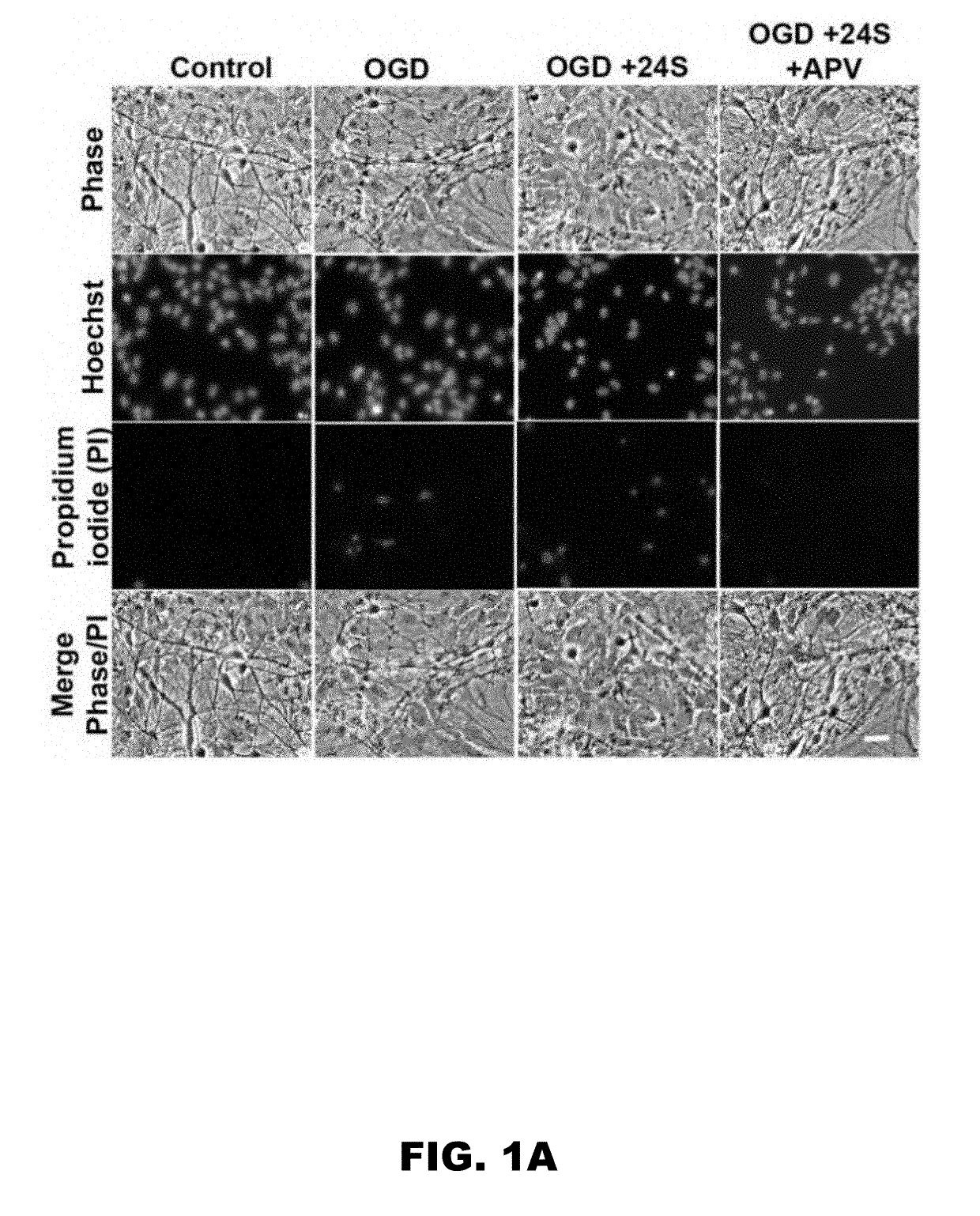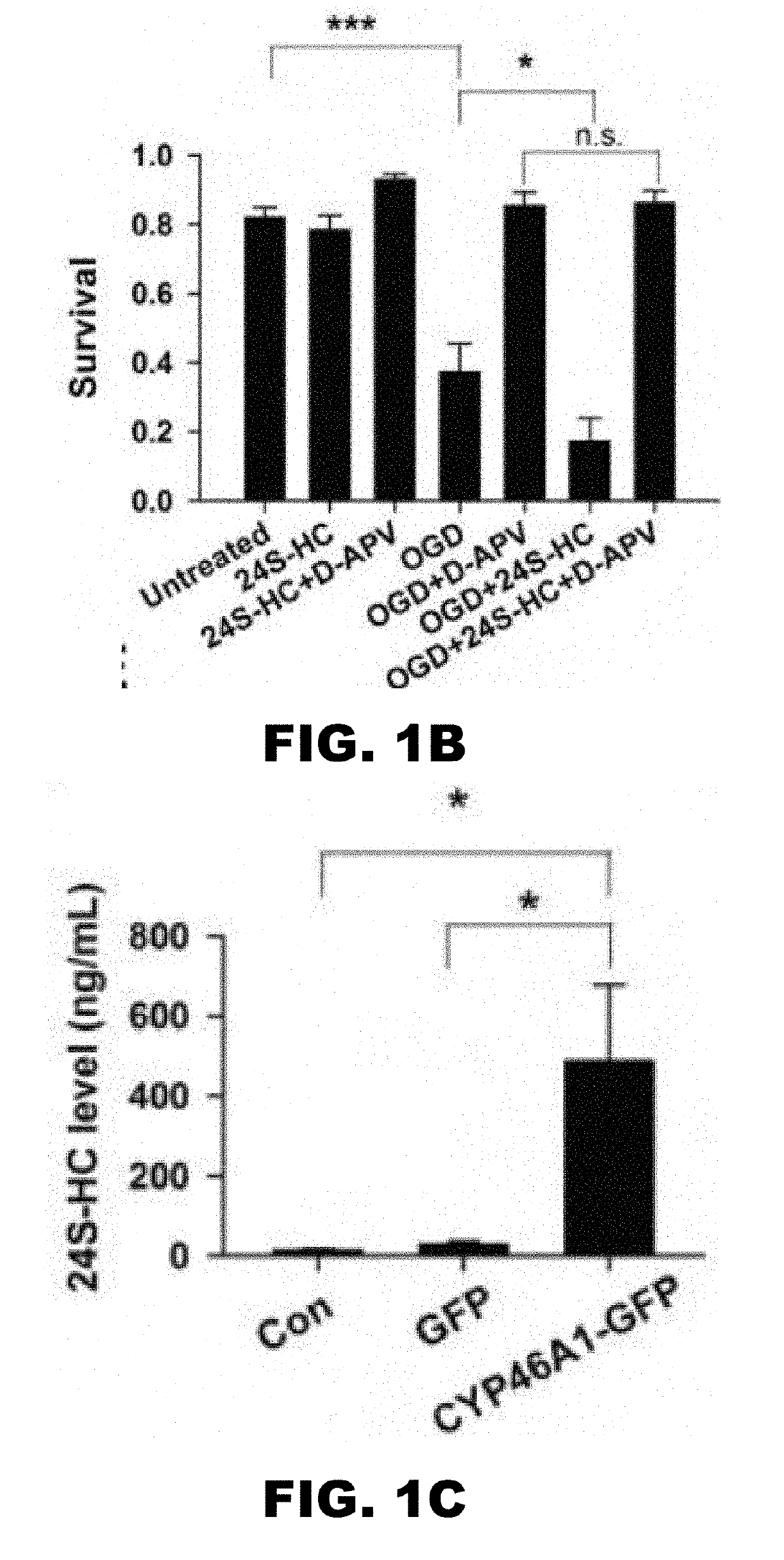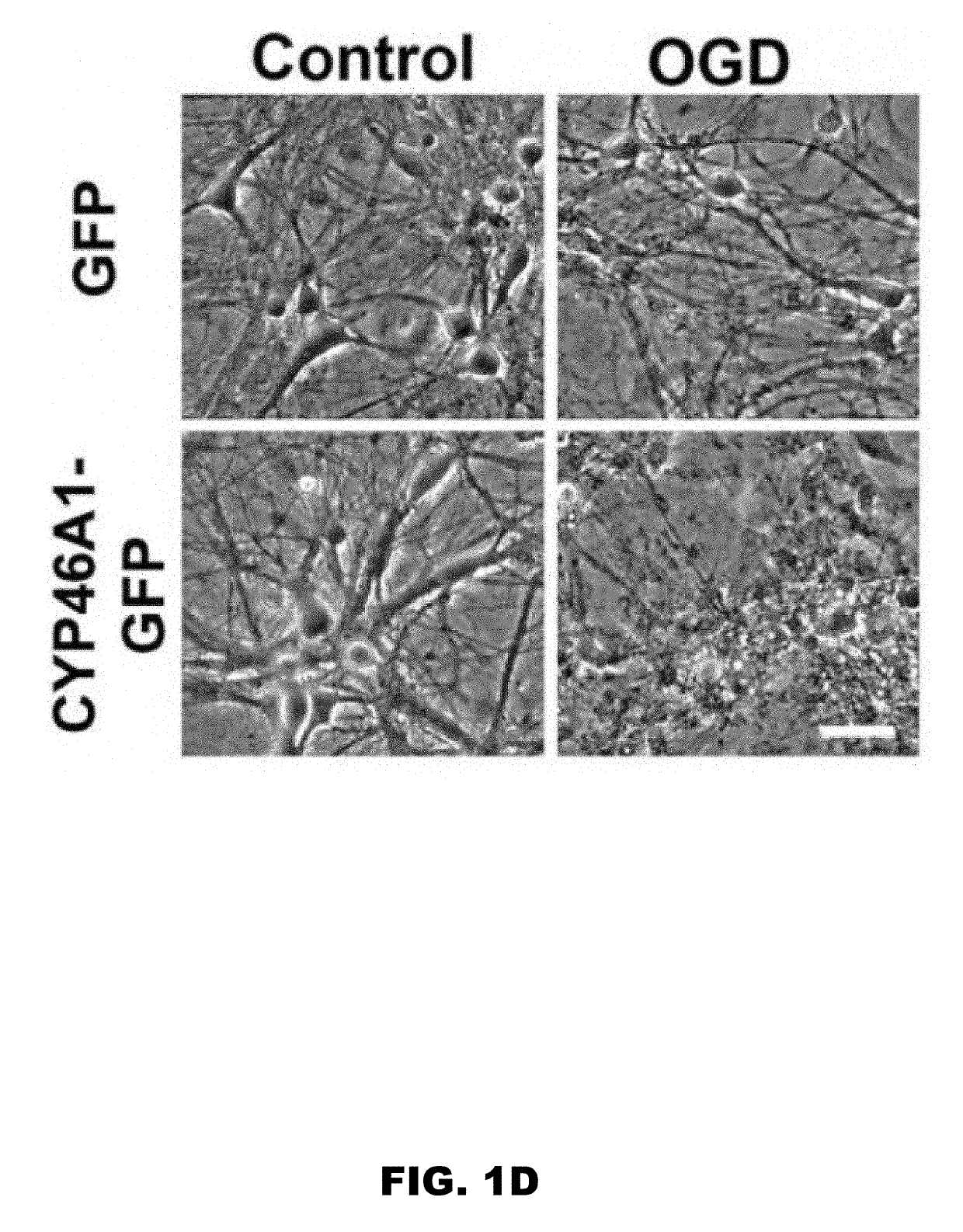25-hydroxycholesterol and methods of use thereof
- Summary
- Abstract
- Description
- Claims
- Application Information
AI Technical Summary
Benefits of technology
Problems solved by technology
Method used
Image
Examples
example 1
24S-HC Exacerbates OGD Damage, which is APV Sensitive
[0076]Cell death induced by hypoxia and OGD in hippocampal cultures is NMDAR dependent (7-10). Because 24S-HC and its analogues increase NMDAR activity (11), these compounds may exacerbate OGD-induced cell death by potentiating NMDAR activity. Effects of 24S-HC on NMDAR function saturate at ˜10 μM (11). Exogenous application of 24S-HC at 2 μM to WT rat hippocampal cultures 14 days in vitro enhanced OGD-induced cell death (FIG. 1A and FIG. 1B). This cell death was rescued by co-treatment with an NMDAR antagonist, APV, prior to and during OGD, confirming that the exacerbation of cell death was NMDAR dependent.
[0077]It was tested whether elevation of 24S-HC by genetically overexpressing CYP46A1 to mimic mature 24S-HC levels could augment endogenous 24S-HC and OGD-induced toxicity. WT rat primary hippocampal cultures were infected with an AAV-CYP-GFP virus. Conditioned culture medium from cells infected with AAV-CYP46A1-GFP exhibited ...
example 2
Endogenous 24S-HC Exacerbates OGD-Induced Damage
[0078]It was next investigated whether down-regulation of endogenous 24S-HC protects against OGD-induced cell death. In CYP46A1 knockout (KO) mice, 24S-HC is greatly reduced, and deficits of NMDAR-dependent functions including synaptic plasticity, learning and memory have been reported (3, 8), suggesting reduced NMDAR activity in these mice. When comparing OGD-induced cell death in WT and KO hippocampal cultures, a significantly higher survival rate in KO cultures was observed, suggesting that reduction of endogenous 24S-HC protects against OGD-induced damage (FIG. 2).
[0079]Because basal levels of 24S-HC are expected to be low in unconditioned medium used for OGD, the difference in OGD neuronal survival between KO and WT cultures was surprising. It was hypothesized that despite low basal concentrations, toxic insults may increase extracellular 24S-HC concentration in medium during insult to levels that modulate NMDAR dependent damage. ...
example 3
25-HC is Partially Neuroprotective Against 24S-HC Exacerbated Damage and Against Damage in the Absence of 24S-HC
[0080]OGD-induced cell death in rat cultures depended on 24S-HC concentration over a range of 50 nM to 2 μM (FIG. 3A). These results suggest that local levels of 24S-HC produced in WT cells are not saturating. The oxysterol 25-HC non-competitively antagonizes 24S-HC effects on NMDARs. Here it was found that co-treatment with 10 μM 25-HC and 2 μM 24S-HC significantly alleviated OGD-induced cell death relative to that induced by 24S-HC and OGD alone (FIG. 3A). Similarly, 1 μM SGE-201, a 24S-HC analogue (11), exacerbated OGD injury, and this was alleviated by 10 μM 25-HC (FIG. 3B). Even without exogenous application of 24S-HC, OGD-induced cell death was alleviated by 10 μM 25-HC incubation during the OGD insult (FIG. 3B). This result could arise from antagonism of unappreciated local, endogenous 24S-HC activity. However, because measured bulk endogenous 24S-HC levels are low,...
PUM
 Login to View More
Login to View More Abstract
Description
Claims
Application Information
 Login to View More
Login to View More - R&D
- Intellectual Property
- Life Sciences
- Materials
- Tech Scout
- Unparalleled Data Quality
- Higher Quality Content
- 60% Fewer Hallucinations
Browse by: Latest US Patents, China's latest patents, Technical Efficacy Thesaurus, Application Domain, Technology Topic, Popular Technical Reports.
© 2025 PatSnap. All rights reserved.Legal|Privacy policy|Modern Slavery Act Transparency Statement|Sitemap|About US| Contact US: help@patsnap.com



